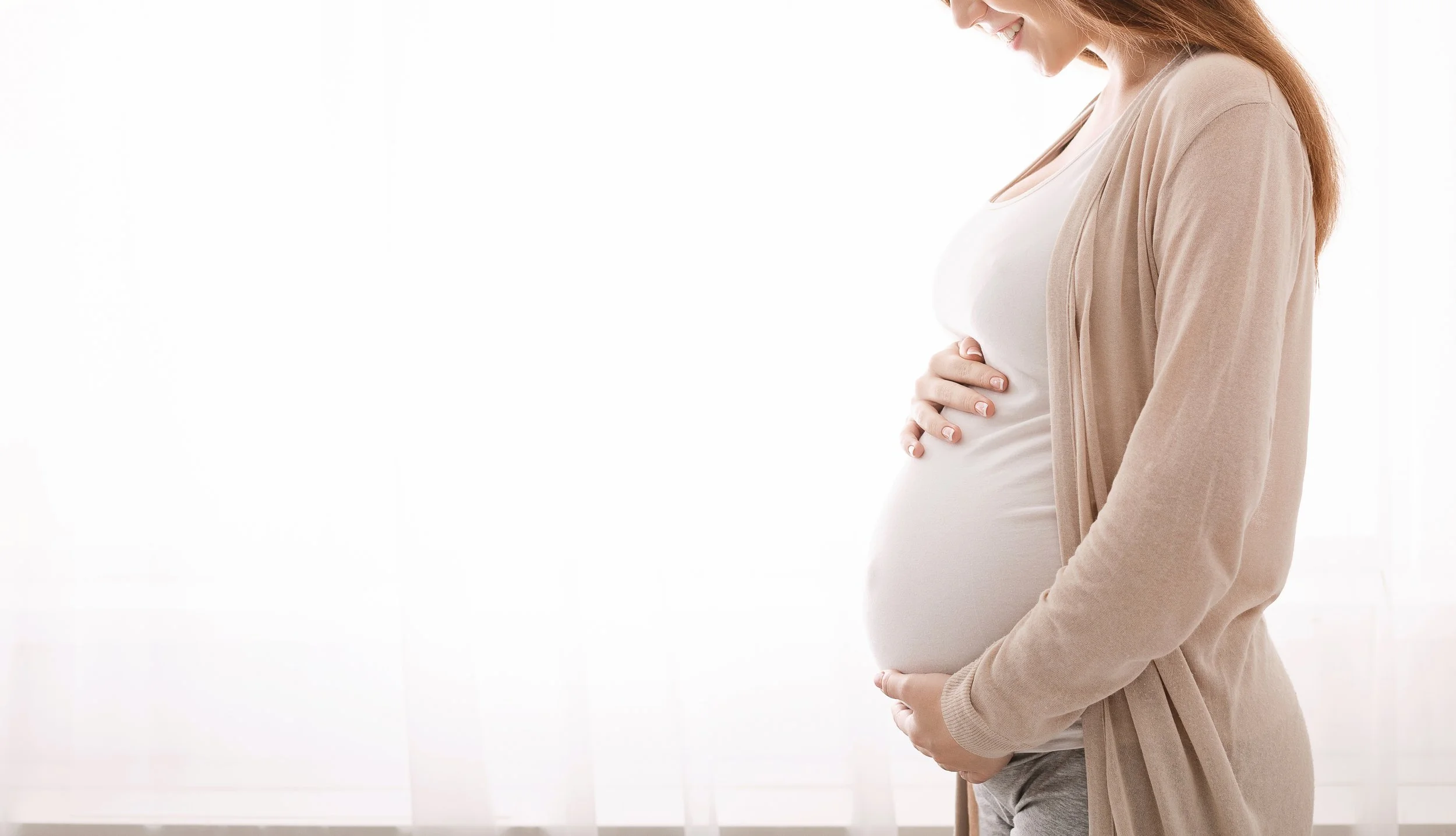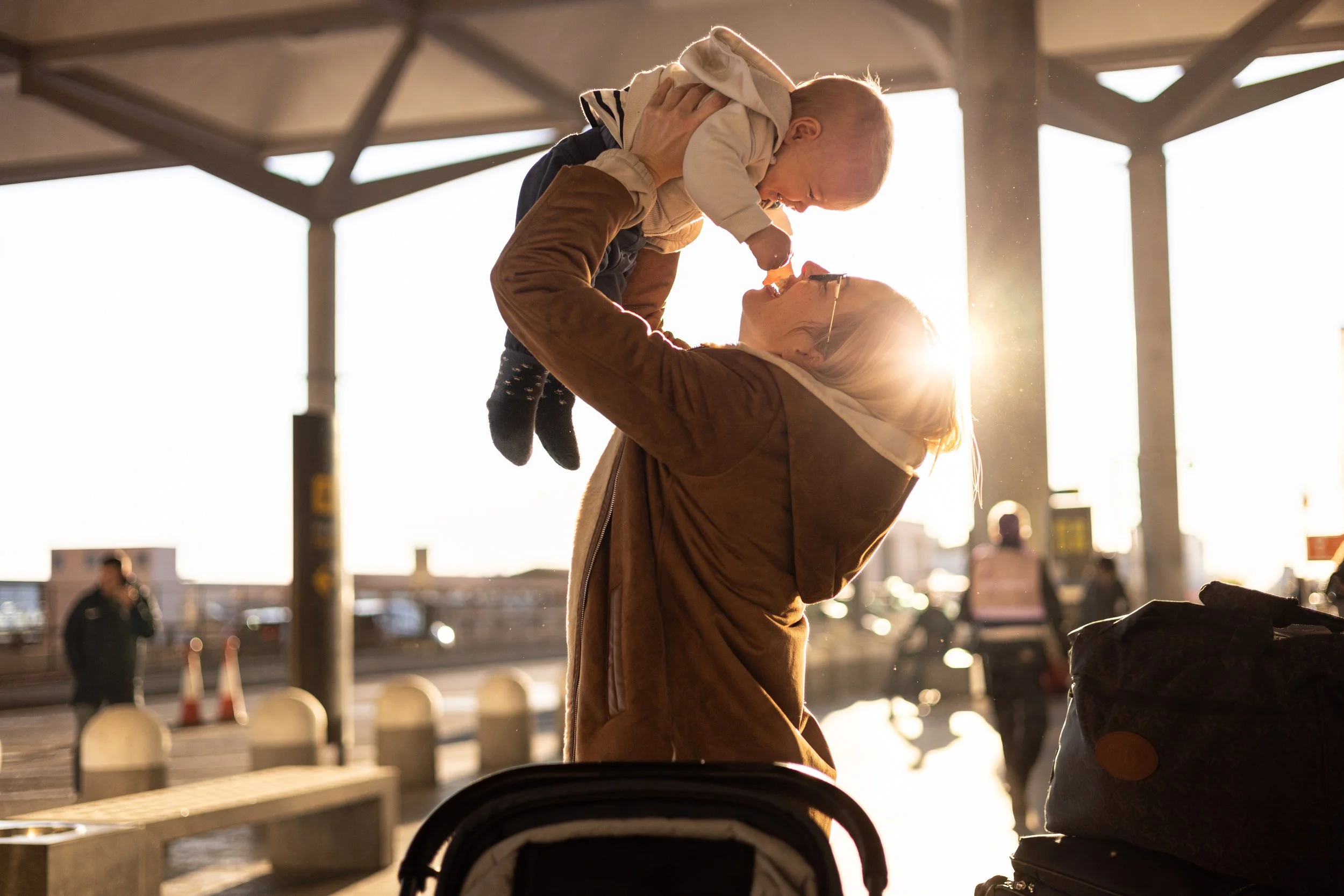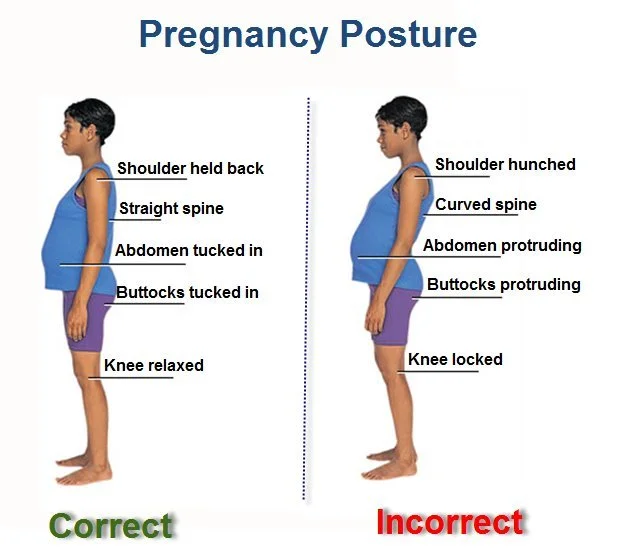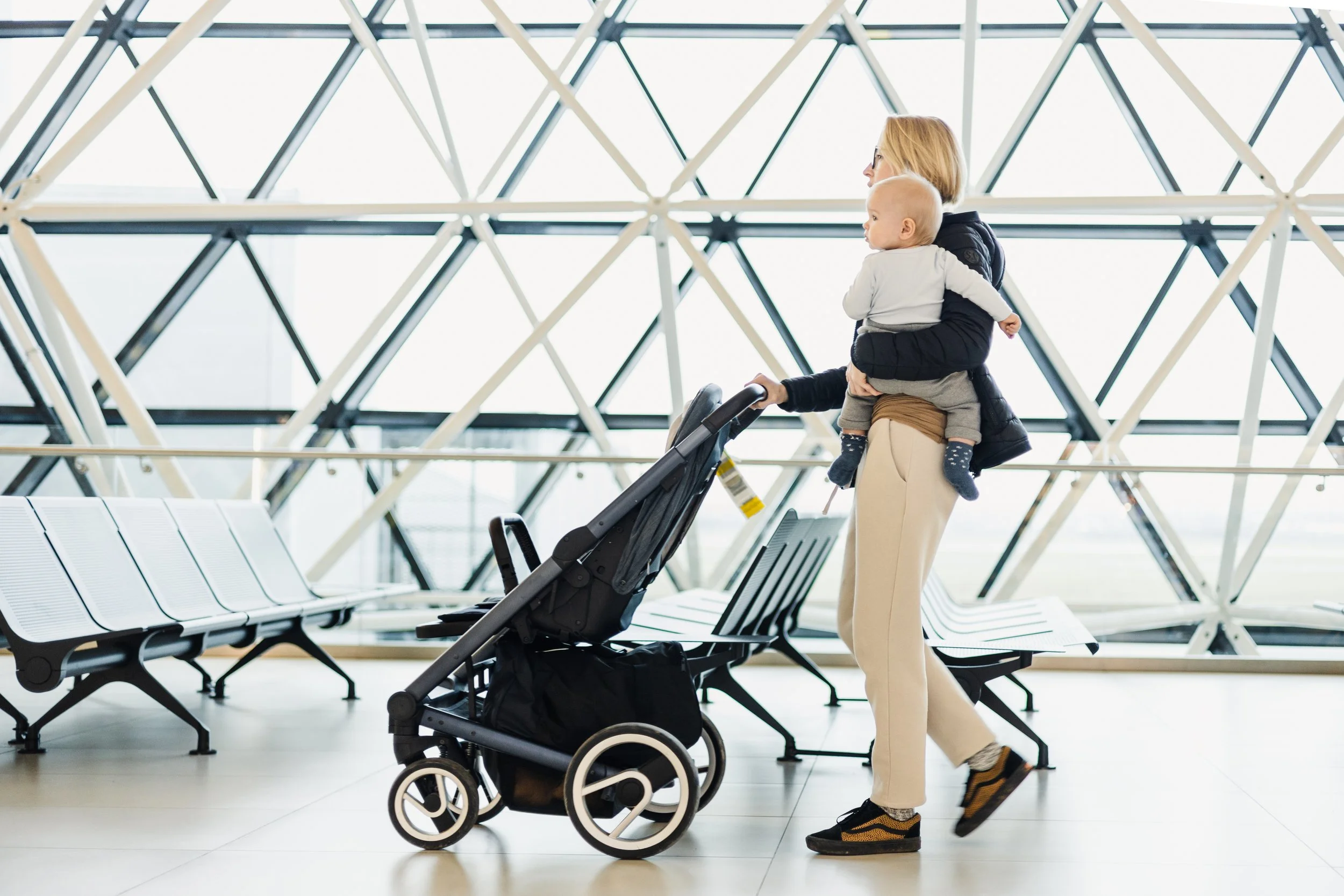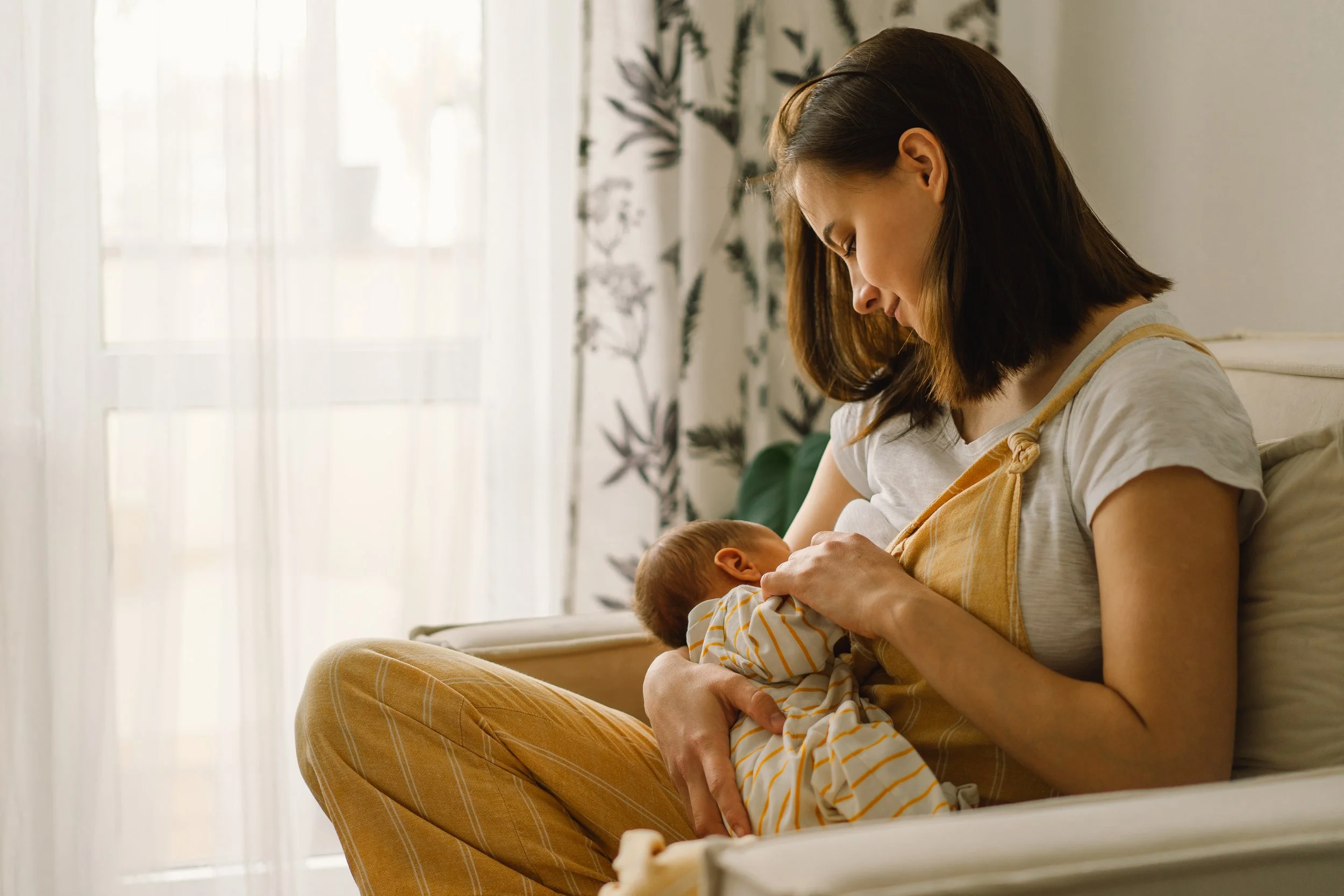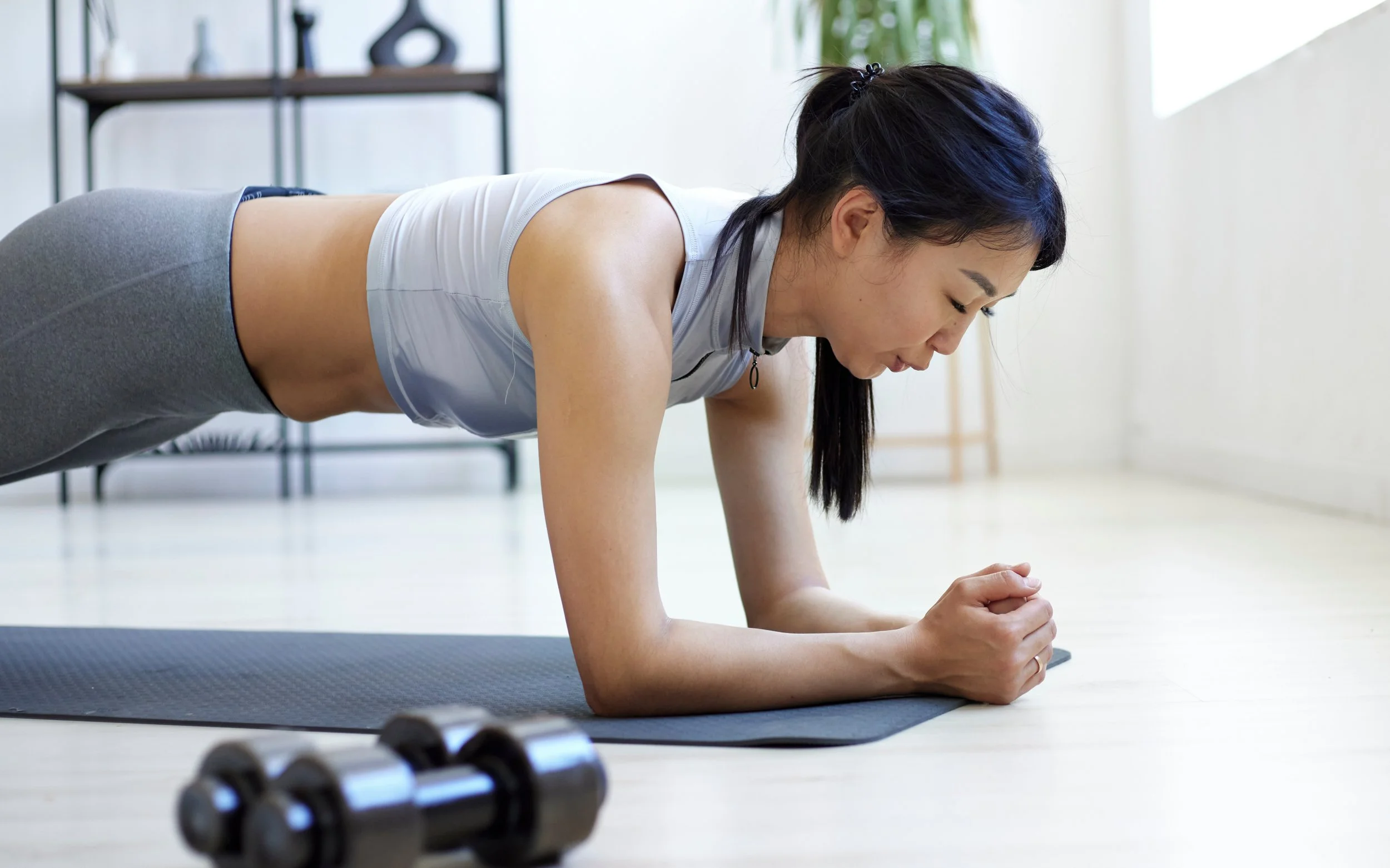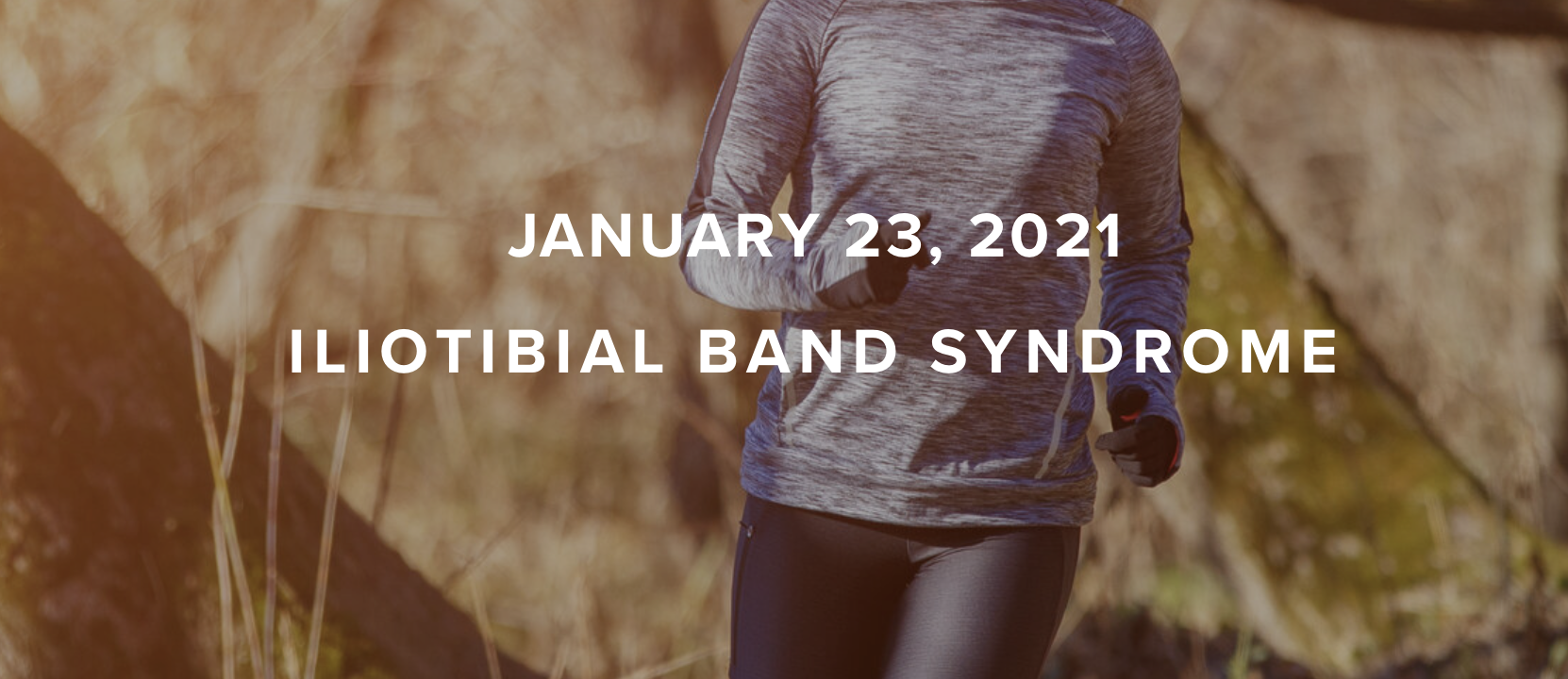POsture changes for new mothers
There are a number of body changes that mothers experience during and after their pregnancies that can cause unique challenges and that often get overlooked in prenatal and post-partum care. These challenges involve increasingly new spine stresses, adaptations, and difficulties maintaining a “neutral spine”.
A neutral spine is the ability to maintain the natural curves of the spine that allow for shock absorption when we stand and walk and allow for our center of mass to be maintained at our belly button region. Women are often challenged through their pregnancies to maintain neutral spine postures due to the fast changing size of the babies and the increased distribution of weight in their mid section.
Some of the body changes that start in the second trimester of pregnancy include:
30% increase in abdominal mass due to the increased size of the uterus and weight of the fetus (1)
Increased curvature of the lumbar spine due to pull on the spine from the expanding belly
Feeling off balance also due to the center of mass changes. (2)
As a way to compensate and maintain balance, women often lock their knees and excessively lean their top half backwards in order to counterbalance the forward pull of the baby’s weight. For some women these postural asymmetries correct after the baby is delivered and their weight distribution normalizes. However, for many women, due to abdominal weakness and having altered postures for many months through their pregnancy, they have a hard time normalizing their posture. These changes, over time can contribute to low back and hip pain.
In addition to pregnancy postures, there are a number of other “Mom Postures” that can contribute to pain and dysfunction in the body
Common “Mom Postures” Include:
Holding a child on one specific hip, usually opposite of your dominant hand
Wearing infant carriers such as Baby Bjorn’s and baby back packs strapped to the chest or back for prolonged periods of time.
Lifting/carrying awkwardly shaped baby carriers in and out of cars
Prolonged positioning of bending over cribs and changing tables that are typically not well ergonomically positioned
Breast feeding often requires women to sit in a position with their spine and shoulders curved forward, while holding up the weight of the baby to their chest.
““Studies have found that pregnant people who participate in regular exercise have improved glycemic response, shorter duration of their first stage of labor, reduced risk of cesarean births, and reduced incidence of preterm birth.””
The average breast feeding mother spends 1800 hours a year breast feeding their babies (3). While the time spent per day breastfeeding varies based on the age of the child, it can average up to 5 hours a day. This repetitive and commonly awkward positioning can cause muscles in the chest, arms and trunk to become tight and contribute to neck and upper back pain. In addition, the hormone Relaxin increases during pregnancy. Relaxin is secreted to make ligaments and joint soft tissues stretch to allow for the baby to pass through the birth canal with less damage. However, after giving brith and after finishing breastfeeding, Relaxin stays in the bloodstream for up to 6 months, continuing to allow for joint hypermobility and laxity. .
All of these postures are unique to women and caregivers for young children. A physical therapist can help evaluate your posture and help with postural positioning tips or braces to offload repetitive load on your joints. In addition, a physical therapist can determine what stretches or strengthening exercises might benefit you to offset the unique demands a child places on your body as well as design a return to exercise plan specific to your family demands with any birth injuries in mind.
“If you are experiencing Pelvic Floor Pain or Incontinence you should seek out a specialist to help you return back to being yourself.”
How does Physical therapy help?
Your physical therapist can help you develop your exercise routine and monitor your response to exercise, and will be at your side to teach you ways to monitor and modify exercises yourself to keep you and your baby safe. Exercises may focus on core, back, and pelvic floor strength to mitigate some of the challenges associated with the growing baby. It is also important to complete total body strengthening to prepare for carrying a baby, carseat, strollers, and all the baby essentials.
Seeing a physical therapist during your pregnancy is the perfect way to maintain or improve your activity level in a safe and controlled environment. This is especially important if you are currently having pain or discomfort that is preventing you from staying active during your pregnancy. While working with your PT, you can also learn strategies to improve your pain during your pregnancy, as well as modifications to make during labor and delivery to avoid further exacerbation of any injuries or pain you may have.There are many more options for labor and delivery than previous generations that can significantly improve a birthing experience, and your PT can help figure out which is the best option for you.
If you are experiencing low back pain or incontinence throughout your pregnancy or postpartum, reach out to a physical therapist. We have several therapists at LWPT specializing in women’s health including:
AUTHOR:
Kendra Alkire, PT, DPT, OCS, MTC
LWPT Kenmore Physical Therapist
CONTRIBUTORS:
Dr. Lauren Vernese, DO
Swedish Sport & Spine Physician
Kerri Smith, PT, DPT, CFSC
Caron Treloar, PT, DPT, PCES
Ben Wobker, PT, MSPT, CSCS, CFSC, SFMA
Founder & Director Lake Washington Physical Therapy
MOre Blogs
MORE WEBINARS
References:
Jensen RK, Doucet S, Treitz T. Changes in segment mass and mass distribution during pregnancy. J Biomech. 1996; 29(2):251–6. [PubMed] [Google Scholar])
Opala-Berdzik A, Błaszczyk JW, Bacik B, Cieślińska-Świder J, Świder D, Sobota G, et al. Static Postural Stability in Women during and after Pregnancy. A prospective Longitudinal Study. Plos One. 2015; 8;10(6):e0124207 doi: 10.1371/journal.pone.0124207 [PMC free article] [PubMed] [Google Scholar])
https://www.forbes.com/sites/amynelson1/2018/10/24/the-politics-of-breastfeeding-and-why-it-must-change/?sh=1c8984d63163

